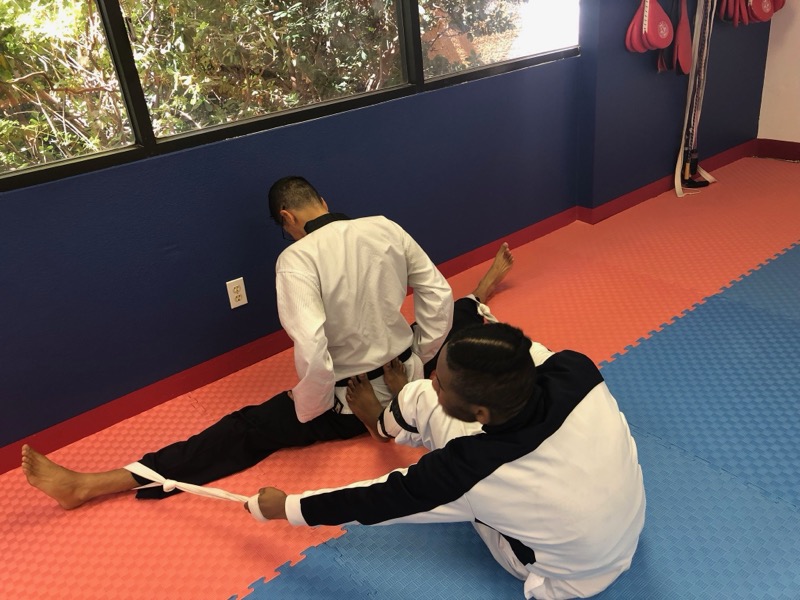
Kicking is more than just a fun activity for kids—it’s a crucial skill that enhances strength, balance, flexibility, and confidence. Whether your child is passionate about Taekwondo, soccer, or simply wants to improve their athleticism, structured practice can unlock their potential. This weekly training plan provides a step-by-step approach to mastering kicks, adaptable for beginners and those with more experience.
Why Focus on Kicking?
The Benefits of Kicking Training
- Improves Coordination: Kicking requires synchronizing various muscle groups, enhancing overall coordination.
- Builds Confidence: Mastering new kicking techniques boosts self-assurance.
- Enhances Flexibility and Strength: Regular practice strengthens muscles and increases flexibility, vital for sports and overall fitness.
- Teaches Discipline: Sticking to a routine instills commitment and focus.
Preparing for Effective Training
Safety First
- Use proper footwear or protective gear relevant to the sport.
- Ensure your child practices on a safe, open surface to prevent injuries.
Warm-Up Matters
A good warm-up prepares the body for activity and reduces injury risks. Try:
- 5 Minutes: Light jogging or skipping.
- 5 Minutes: Dynamic stretches targeting legs, hips, and ankles.
Set Clear Goals
Discuss with your child what they want to achieve, such as improving kick power, accuracy, or flexibility. Tracking progress keeps them motivated.
Weekly Training Plan
Week 1: Building a Strong Foundation
Session 1: Focus on Technique
- Warm-Up (10 minutes)
- Drills (15 minutes)
- Basic Kick Practice: Slowly practice front kicks or roundhouse kicks, focusing on proper posture and control.
- Static Holds: Hold a kick position for 10-15 seconds to build balance and strength.
- Cool Down (10 minutes)
Stretch muscles used during training, especially hamstrings, calves, and hips.
Session 2: Balancing and Control
- Warm-Up (10 minutes)
- Drills (20 minutes)
- One-Leg Balance Drills: Stand on one leg for 30 seconds to a minute, then switch. For more challenge, close eyes or use a balance board.
- Shadow Kicking: Practice kicks without a target, focusing on technique and fluidity.
- Cool Down and Reflection (10 minutes)
Encourage your child to reflect on what went well and areas for improvement.
Session 3: Flexibility and Partner Work
- Warm-Up (10 minutes)
- Drills (20 minutes)
- Flexibility Exercises: Include seated stretches and dynamic lunges.
- Partner Kicking Drills: Practice controlled kicks with a partner holding a target pad.
- Cool Down (10 minutes)
Stretch thoroughly to reduce muscle tension.
Week 2: Building Power and Accuracy
Session 1: Strength Training for Kicks
- Warm-Up (10 minutes)
- Drills (20 minutes)
- Strengthening Exercises: Incorporate squats, lunges, and calf raises.
- Wall Kicks: Perform kicks against a wall, focusing on power and form.
- Cool Down (10 minutes)
Session 2: Precision Focus
- Warm-Up (10 minutes)
- Drills (20 minutes)
- Target Practice: Use cones, soccer goals, or kicking shields to develop accuracy.
- Controlled Kicks: Focus on form and placement over speed or power.
- Cool Down (10 minutes)
Session 3: Combining Skills
- Warm-Up (10 minutes)
- Drills (20 minutes)
- Combo Kicks: Practice sequences like front kick followed by a side kick.
- Kicking Drills with Feedback: Record video or use mirrors to observe and refine technique.
- Cool Down (10 minutes)
Tips for Parents
- Be Encouraging: Celebrate progress, no matter how small, to keep motivation high.
- Create a Fun Environment: Incorporate games like “kick the target” to make training enjoyable.
- Monitor Safety: Ensure that form is prioritized to prevent injuries from overexertion or improper techniques.
Progress Tracking
Encourage your child to keep a training journal, noting areas of improvement and goals achieved. Regularly reviewing this journal can reinforce a sense of accomplishment and identify areas to refine.
Conclusion
Mastering kicks takes dedication, patience, and practice, but the rewards extend beyond athletic ability. By following this structured training plan, your child will not only improve their kicking skills but also develop confidence, discipline, and a love for movement.
Written by AI & Reviewed by Clinical Psychologist and Head Coach: Yoendry Torres, Psy.D.
Disclaimer: Please note that some blog posts may contain affiliate links, and TKD Wellness will earn a commission if you purchase through those links at no additional cost to you. We use all of the products listed and recommend them because they are companies or products that I have found helpful and trustworthy. Our website is supported by our users.